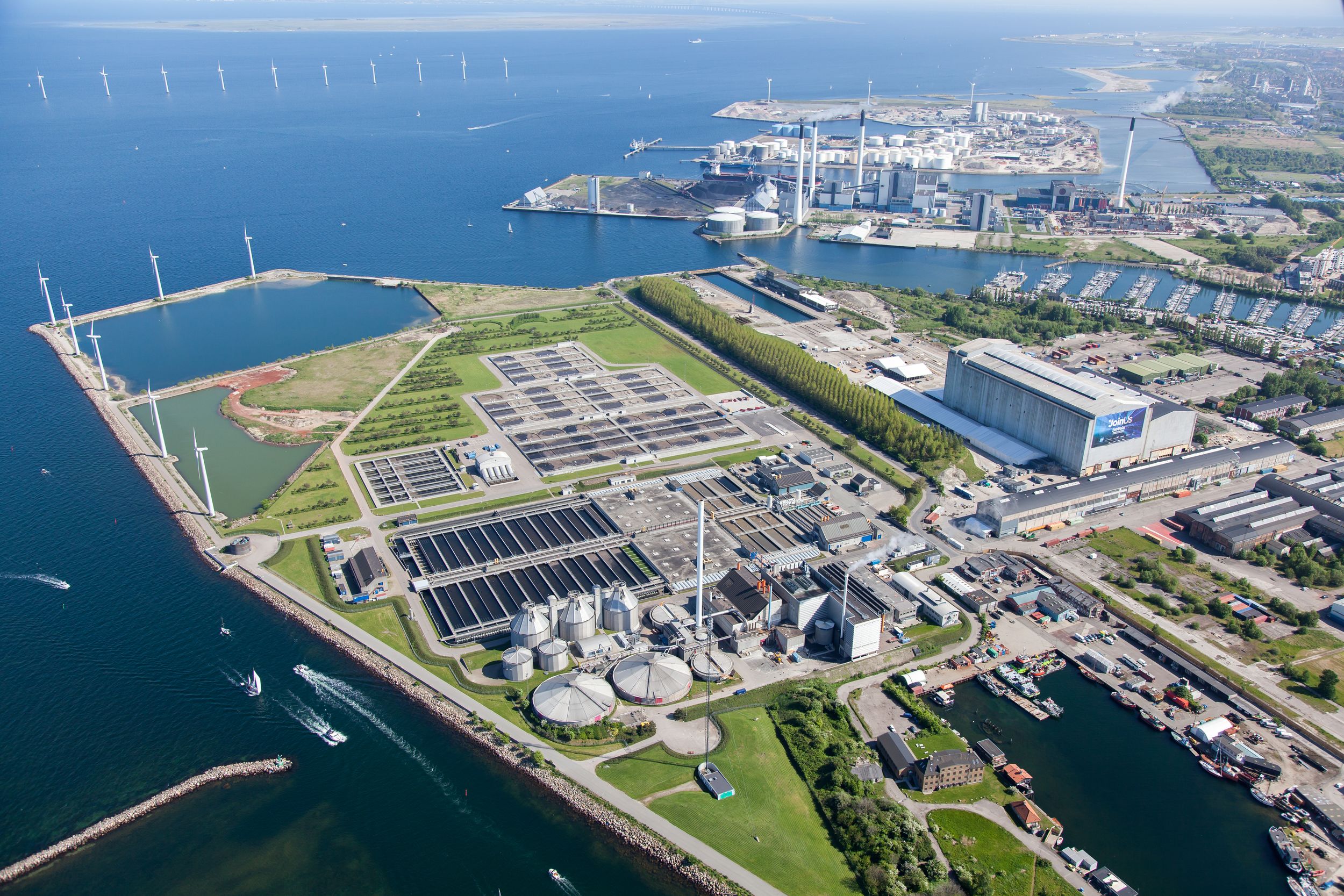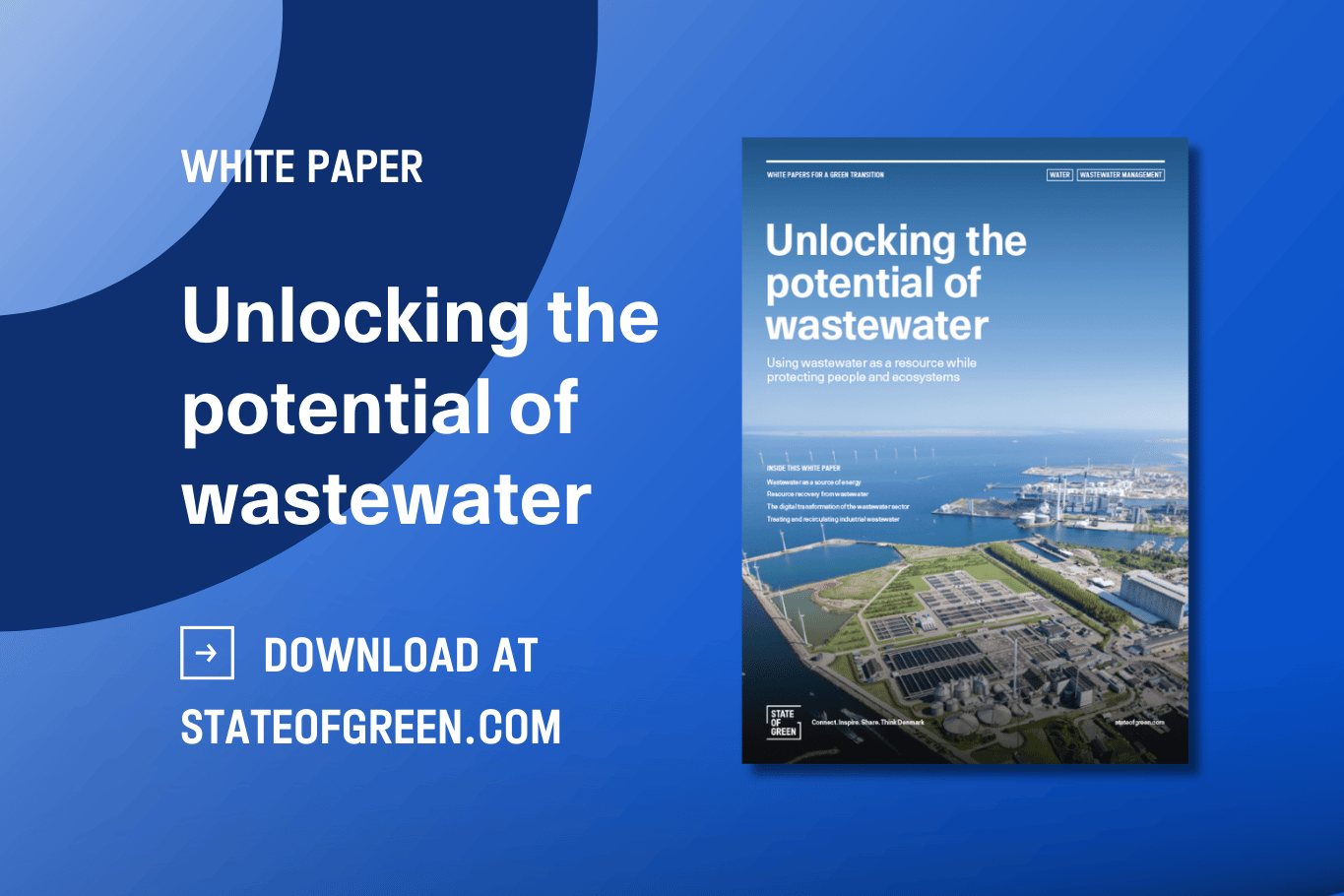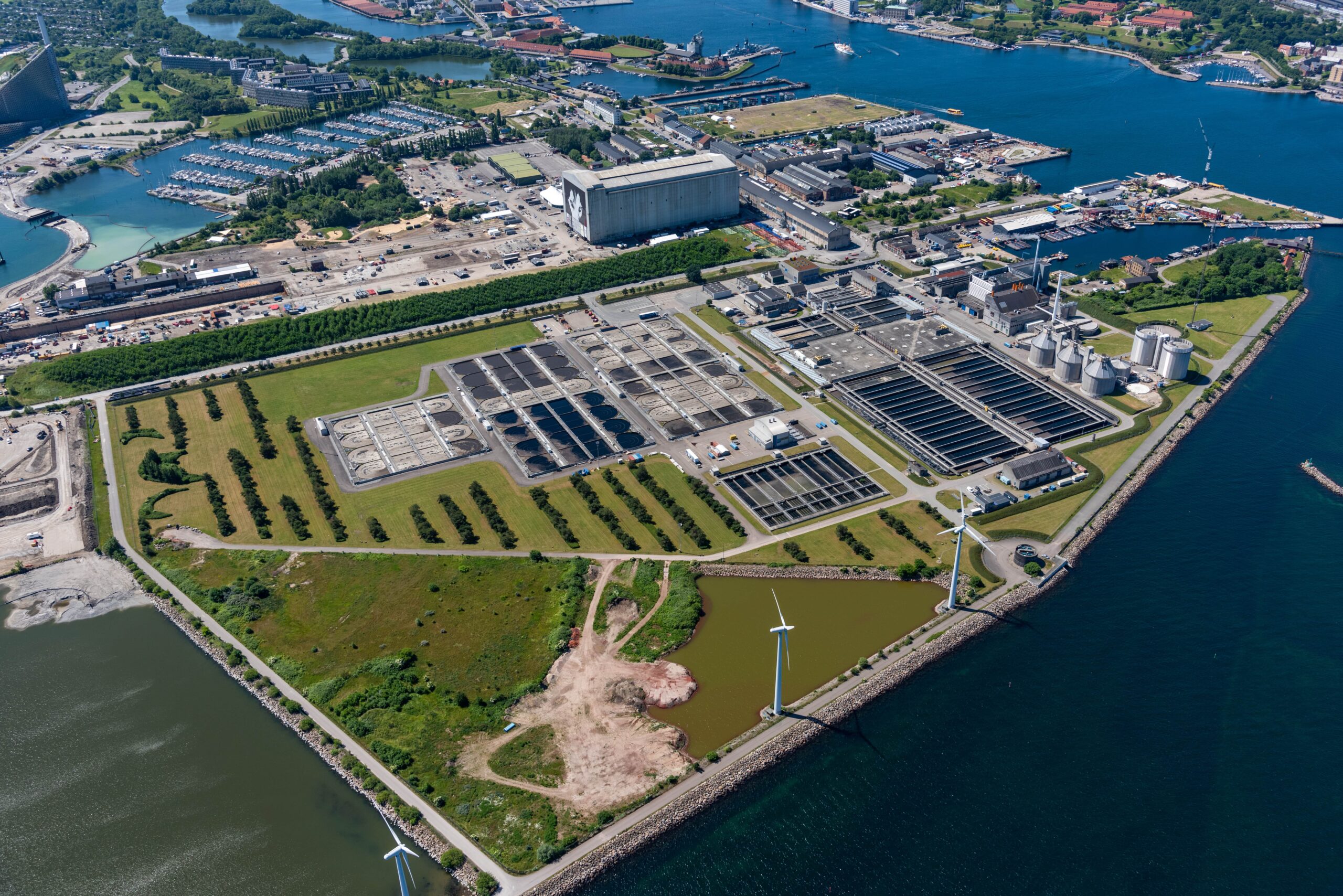White paper: Unlocking the potential of wastewater
Discover our white paper and learn how to use wastewater as a resource while protecting people and ecosystems.
Discover the white paperNews
Wastewater treatment
Wastewater management
Wastewater-to-energy

Credit: Luftfoto Danmark ApS


Discover our white paper and learn how to use wastewater as a resource while protecting people and ecosystems.
Discover the white paperCopenhagen’s leading wastewater utility, BIOFOS, has achieved climate positivity a year ahead of schedule, as highlighted in its half-year report for 2024.
This accomplishment means that BIOFOS’s three wastewater treatment plants in and around Copenhagen now produce enough green energy from wastewater to offset more CO2 than the plants emit.
This marks a significant step in Copenhagen’s broader climate agenda and supports Denmark’s ambition to reach a climate- and energy-neutral water sector by 2030.
“This is a significant and important milestone that we have now reached, and I am proud that we can already fulfill our ambitious goal of being climate-positive by 2025. It shows that as a municipally owned utility, we should increasingly be seen as a resource facility that both purifies and utilizes the resources in wastewater, rather than ‘just’ a treatment plant. We are a strong player in the green transition and the embodiment of a circular economy,” says John Buur Christiansen, CEO of BIOFOS.
Being climate-positive means BIOFOS displaces more CO2e than it emits through its three wastewater treatment plants. The utility’s emissions mainly come from the energy used — electricity, heat, and oil — and nitrous oxide, a byproduct of the water treatment process. In the first half of 2024, despite emitting 5,320 tonnes of CO2e, BIOFOS succeeded in displacing 5,806 tonnes.
Also read: Wastewater is of global importance
The key driver behind this positive shift has been the increased production of biogas and energy-saving initiatives, such as implementing bottom aeration in parts of the treatment process. By the end of 2023, two out of three BIOFOS plants, located in Avedøre and Lynetten, had been converted to bottom aeration, significantly reducing energy consumption and leading to a substantial decrease in CO2 emissions. The third plant, the wastewater plant in Damhusåen, is expected to adopt this method by 2025.
Nitrous oxide accounts for nearly half of BIOFOS’s total CO2e emissions, and the company is focused on reducing this impact. Projects are underway to explore how nitrous oxide emissions from the treatment process can be minimised, with the potential to reduce emissions by up to 80%. Alongside other energy reduction measures in the operation of the three treatment plants, there is a strong belief that the future trend for CO2 emissions will continue to decline.

The BIOFOS Utility, treating wastewater in the Greater Copenhagen area, has enhanced the operation of its three large treatment plants through a commitment to sustainability and innovation.
Discover the case in the white paper “Unlocking the potential of wastewater”.
Discover the casesolutions
Climate change adaptation
+4
solutions
Wastewater treatment
+1